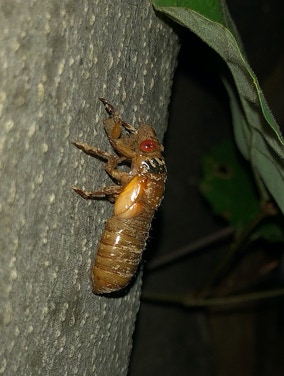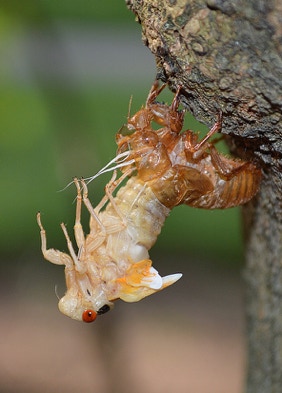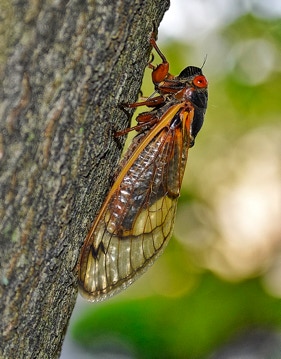


Source: Dr. Gene Kritsky, Professor of Biology
•Cicadas emerge after the soil temperature exceeds 64º F, which is usually in mid May.
• Only the male cicadas sing. They have sound-producing structures called tymbals on either side of the abdomen.
• It is easy to tell male cicadas from female cicadas. To do so turn the cicada over: the female will have a groove in which is found the ovipositor; the male’s abdomen will terminate with a square shaped flap.
• There are three species of 17-year cicadas, which will emerge in 2019. They are named Magicicada septendecim, Magicicada cassini and Magicicada septendecula.
There are four species of 13-year cicadas, which will not emerge this year. They are named Magicicada tredecim, Magicicada neotredecim, Magicicada tredecassini, and Magicicada tredecula.
• Groups of cicadas that share the same emergence years are called broods. The brood number is usually given in Roman numerals. Charles Marlatt, an entomologist working for the Department of Agriculture, designated that all the cicadas that emerged in 1893 and at 17-year intervals thereafter as Brood I [one]. The cicadas that emerged in 1894 were called Brood II [two] and so on. The 13-year cicadas that emerged in 1894 were called Brood XVIII [eighteen] and so on. The cicadas that will this year belong to Brood II [two].
• Not all cicadas count the years correctly. In 2000, based on collections of cicada nymphs during their 17 years underground, Dr. Gene Kritsky predicted that thousands of cicadas would emerge four years early.
• Adult cicadas do not eat solid food, but do drink fluids to avoid dehydration.
• Adult cicadas do not sting or bite humans, and they do not carry diseases. But they can harm young trees when female cicadas lay their eggs in the tree’s new growth. It is not recommended that you spray to kill the cicadas, because they fly into a tree to lay their eggs and spraying will not kill these incoming cicadas. If you have a young tree, you can loosely wrap the branches with cheesecloth to keep the female from laying her eggs.
• Pesticides are not effective at controlling periodical cicadas.
• Periodical cicada years are quite beneficial to the ecology of the region. Their egg-laying in trees is a natural pruning that results in increased numbers of fruits in the succeeding years. Their emergence from the ground turns over large amounts of soil, and after they die their decaying bodies contribute a massive amount of nitrogen and other nutrients to the soil.
• Periodical cicadas are best eaten when they are still white, and they taste like cold canned asparagus. Like all insects, cicadas have a good balance of vitamins, are low in fat, and, especially the females, are high in protein.
• Periodical cicadas are often incorrectly called locusts. Locusts are grasshoppers and cicadas are more closely related to aphids than grasshoppers. The term locust started to be used around 1715 in the English colonies, when citizens tried to make sense of the cicada emergences by equating them with the biblical plagues and the fact the John-the-Baptist ate locusts. The Native Americans also ate cicadas.
All content and photographs on the site © Gene Kritsky.

